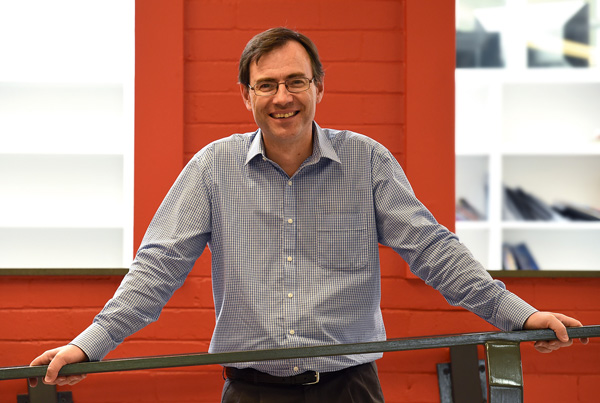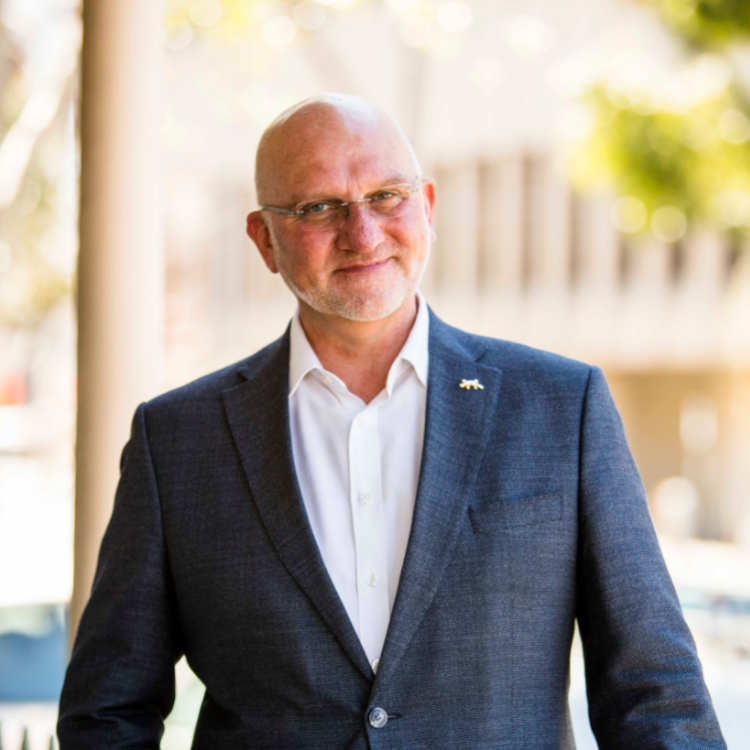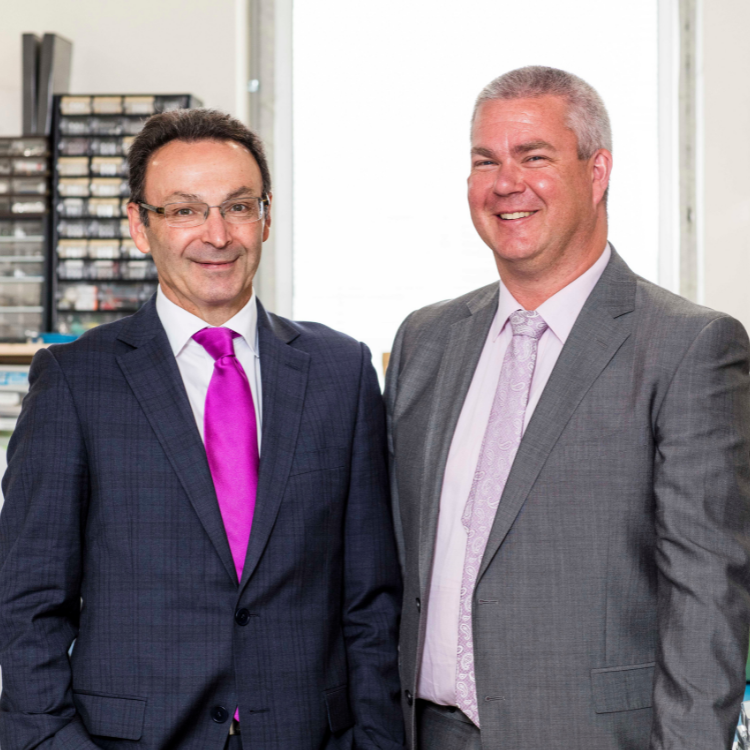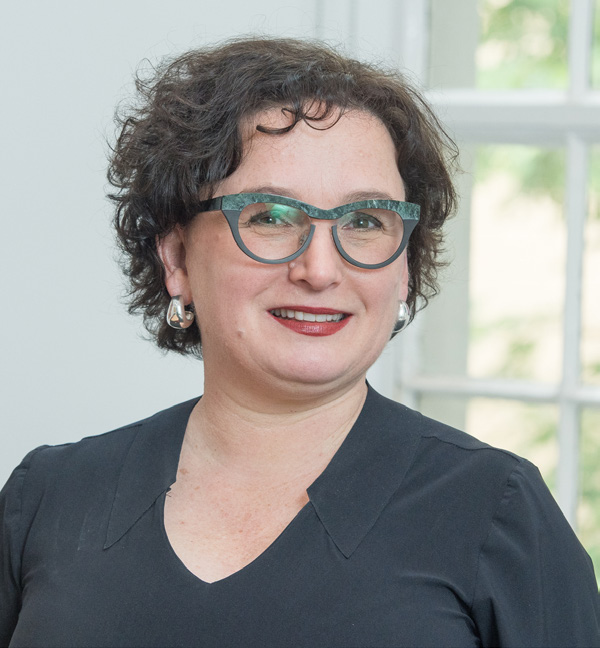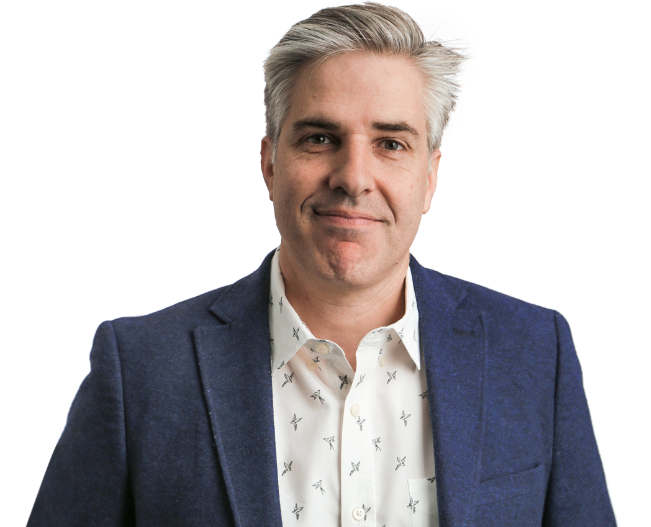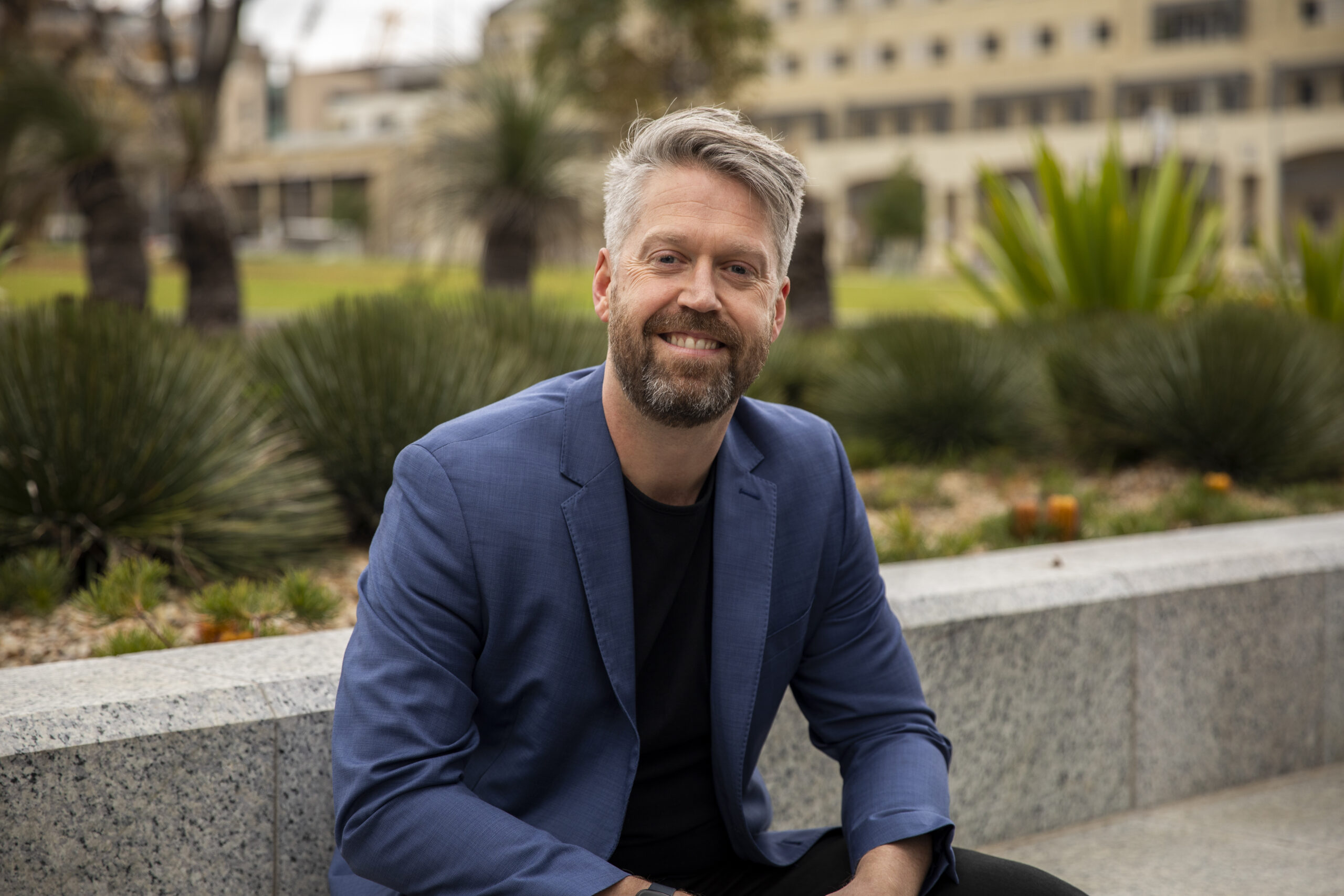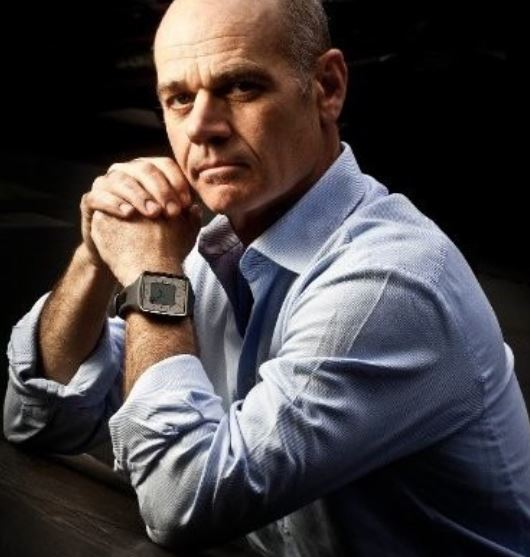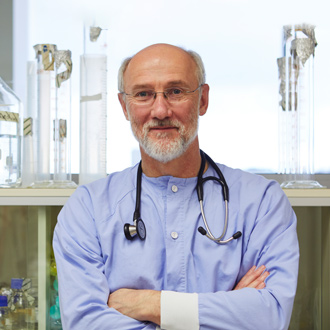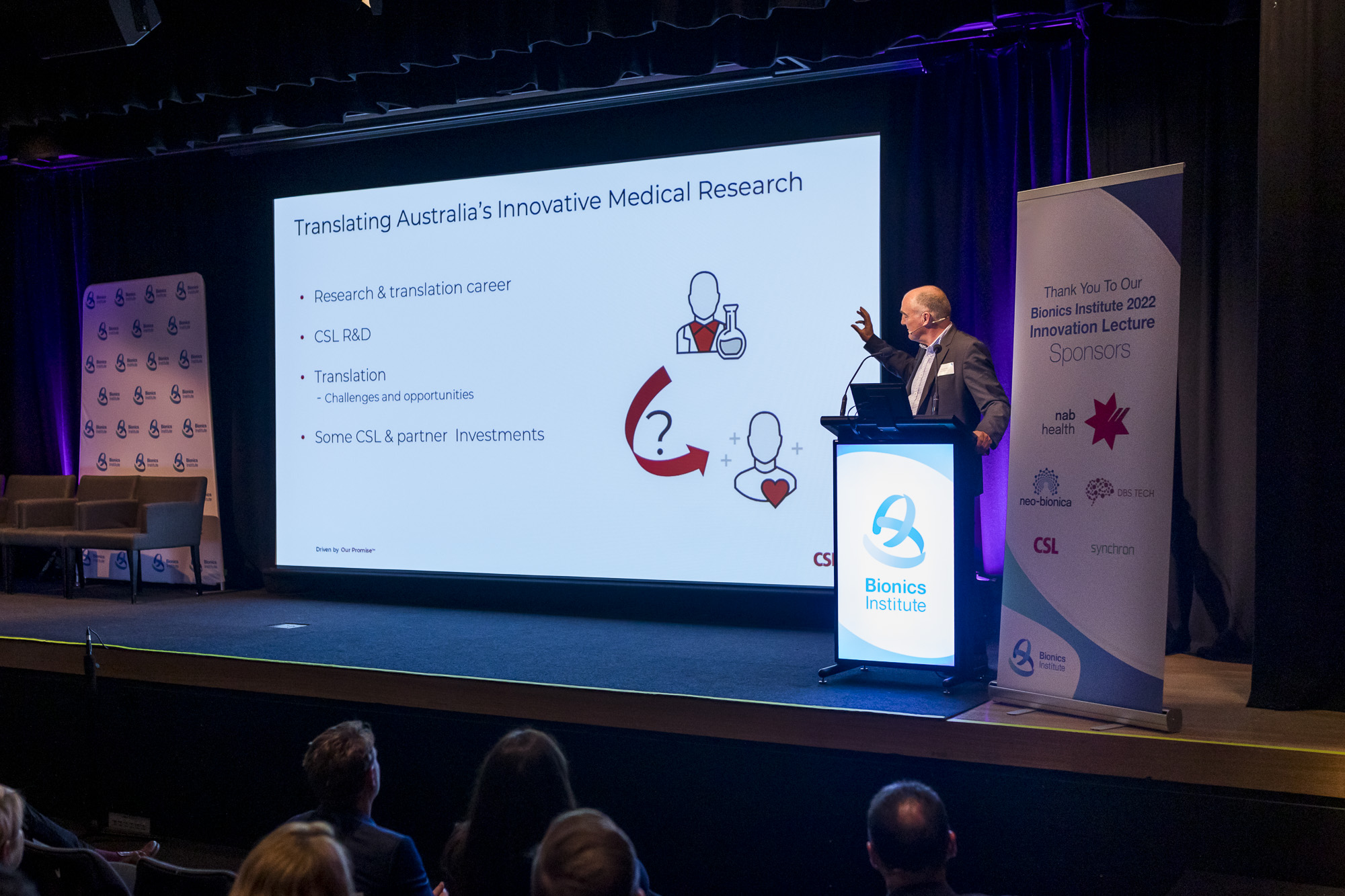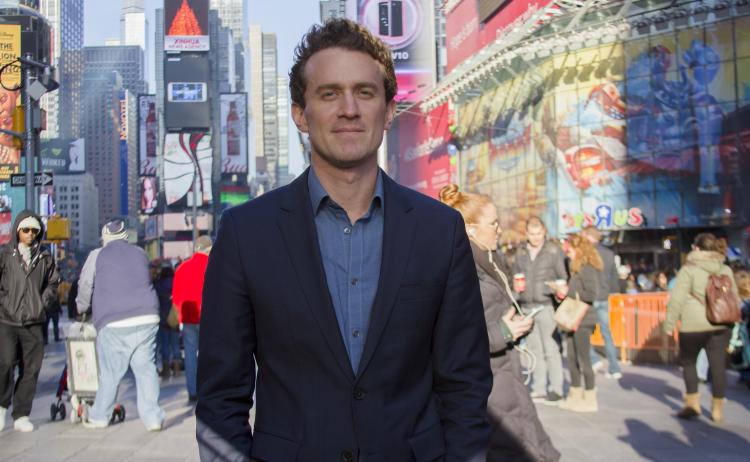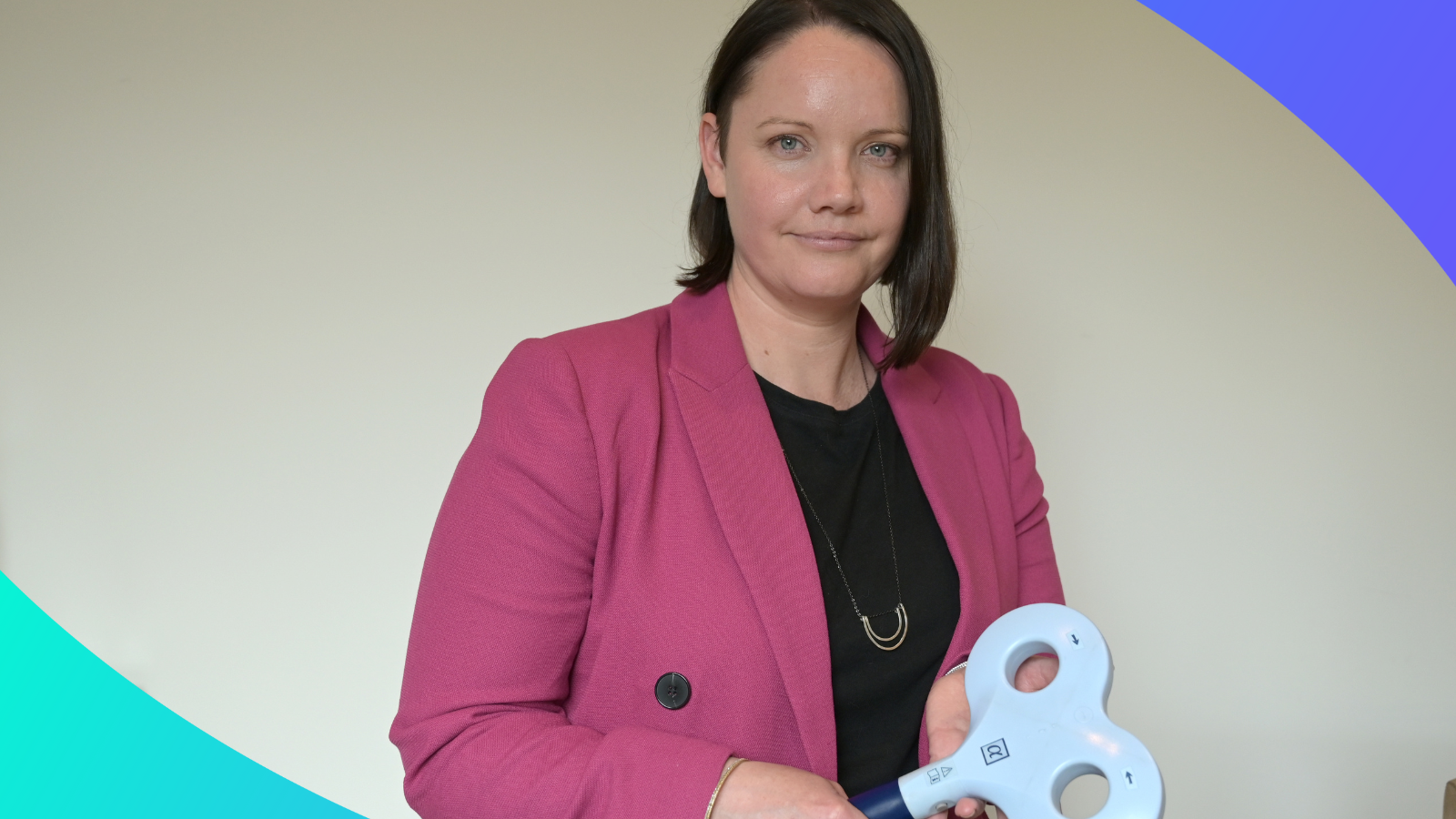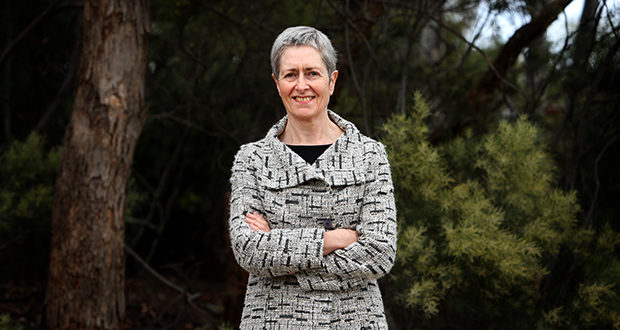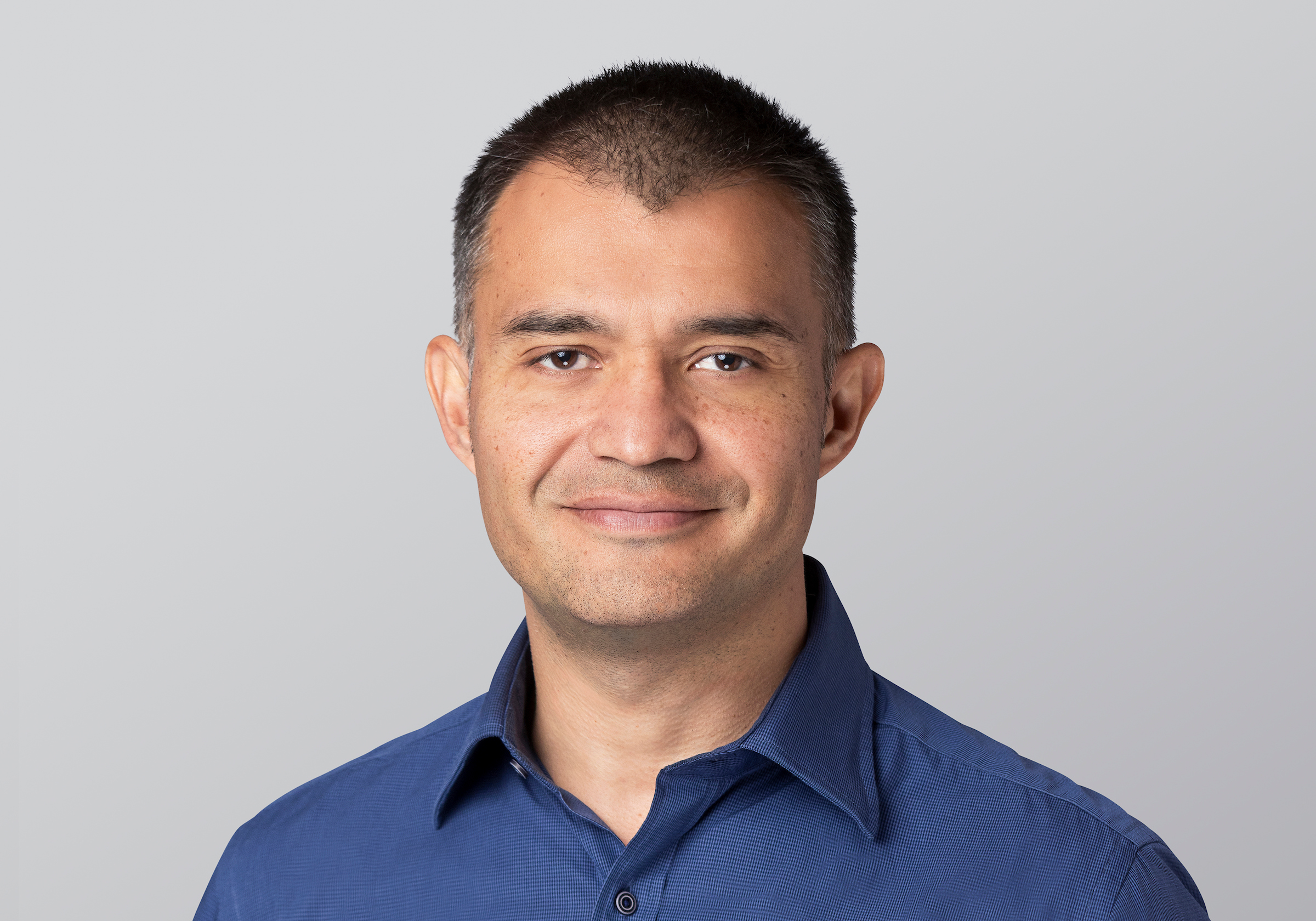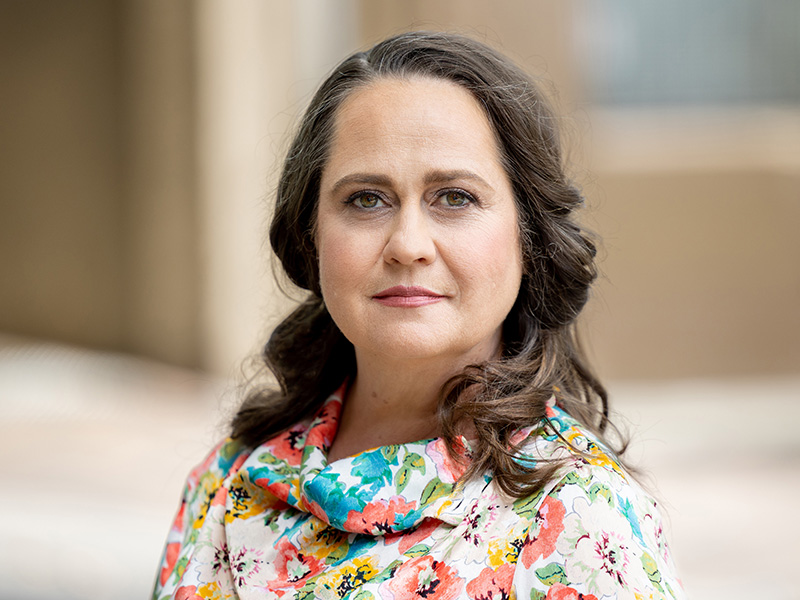Robert Klupacs [00:00:00] And my guest today is Dr. Megan O’Connor, founder and managing director of Kantara, a consulting a biotech focused consultancy bringing top tier government relations and funding services to the Australian SMB biotech sector. Dr. O’Connor is passionate about improving communication and collaboration between business, academia and the political worlds in order to achieve the best outcomes for commercialisation. Prior to founding Cantor Consulting in 2020, Dr. O’Connor was Director of Global Investment and Innovation Incentives at Deloitte and Manager for Research and Development Tax Incentives at Ernst and Young. Megan has a Ph.D. in neurobiology from Lund University in Sweden and an MBA from the University of New South Wales. We are delighted to have you on our podcast. Welcome, Dr. Megan O’Connor.
Dr Megan O’Connor [00:00:56] Thank you very much. It’s a pleasure to be here with you.
Robert Klupacs [00:01:00] We’ve got a few questions for you today, Megan. First one, and this is quite fascinating to me, your Ph.D. focused on the study of the visual system, of the box jellyfish and at all places, Lund University in Sweden. Fascinating subject, fascinating location. I only thought I lived in Queensland. How did you come to do a PhD in this?
Dr Megan O’Connor [00:01:22] It’s a great question because I never really set out to do a Ph.D. and never, definitely never set out to do a Ph.D. in box jellyfish. But I did always want to do a student exchange program. So I my bachelor’s degree, I did that at the University of Queensland, and one of the partner universities that they had set up the student exchange programs with was Lund University. So I ended up in Lund and they had this amazing course called Censoring in Your Biology, which was really well known, it was quite famous, and there was people from all over Europe went to do this to to do this program. So it was just fascinating was approached. So I had I had focused a lot on human biology, human physiology, my undergraduate degree. And in this program, they were looking at the the sensory systems, the six senses that animals have. And lo and behold, the professor of the department then had a special research topic lecture, which he gave, and it was on box jellyfish. And I was the only Australian in the room and knew all about box jellyfish, but I did not know that they had this fascinating visual system. So. What you may not know is that box jellyfish have 24 eyes and four different eye types. And one of those eye types is a camera type eye, which is the same type that we have. But as you’d expect, box jellyfish have a very simple nervous system. So the question was, well, what are they doing with these eyes? What are they doing with this visual system? How do they process information? And I found that fascinating. So I went and did a summer project with the professor after the my exchange. And that turned into a Ph.D. and five years in Sweden studying box jellyfish, coming back to Australia once a year to do research. Yes, in north Queensland and the box jellyfish, actually, you find them in Hawaii, Japan, Indonesia and not all of them are deadly. Some of them, quite a few species are, or the Irukandji might not be deadly but are very poisonous. So they were very interesting animal to work on for lots of different reasons and testing.
Robert Klupacs [00:03:58] So five years in Sweden doing a PhD, but rather than staying in academia, you eventually moved into industry. What was the impetus to move?
Dr Megan O’Connor [00:04:08] Well, I think like most people who get into the medical field or the scientific field, a key driver is to make an impact, you know, make a difference and. Hopefully improve people’s lives. And for me, I thought from my perspective, moving to industry put me closer to that. I also at the University of Queensland, I did a dual degree, so I did science and economics. So I always had an interest in in business. And so I think it was a natural kind of progression to then after my PhD to move to industry to a more applied way of, of, of, you know, a pathway which was more applied.
Robert Klupacs [00:05:03] Interesting. You’ve got an interesting life. You’ve you’ve gone into academia following a Ph.D.. You’ve worked with two very large big four companies, and now you’ve been your own entrepreneur. You set up your own consultancy business, Kantara So let’s hear from you a little bit, what it’s like to be on the other side as an entrepreneur dealing with entrepreneurs. And secondly, what’s the mission of Kentara consultancy and what are you really trying to do to help the buy into Australia’s biotech industry?
Dr Megan O’Connor [00:05:33] So look, our mission at Kantara is to help Australian life science companies make their life changing impact on the world. And so how we do that is one, three government relations, government funding, assistance and also help with R&D tax incentive. I suppose at the core of what we do is communication. It’s communicating science to different audiences. It could be to the government to really highlight that the benefit, the economic benefit, the social benefit of what companies are doing, or then also to investors as well. So we also advocate for the for the biotech industry. We’re involved with both help companies put submissions to government on on different policy settings that would help grow the industry. And we also put in our own submissions as well. So for example, the patent box tax, which was put before the parliament last year or early, early this year now. So we put in a submission there to advocate for for the patent box. Also, we’re huge advocates also for the R&D tax incentive. So as you would know that that’s been a core support mechanism for for industry in the life science sector and is also through what we do. I’m regularly talking to overseas companies that are looking to set up subsidiaries, R&D subsidiaries, facilities in Australia. And the first thing that they ask about is R&D tax incentive. It’s a real driver for just opening the door to for overseas companies to think about setting up in Australia. So and to me that really demonstrates the importance that the right policy settings have on. Cultivating an industry, growing an industry, strengthening an industry.
Robert Klupacs [00:07:41] I’m sort of follow that up a little bit because I’ve had a lot to do with R&D tax incentives in my career and now that I’m working the other side in the academic sector. One of the rules to getting the R&D tax is the company can’t be owned more than 50% by a not for profit entity. On paper, you get it. It sounds right. But if you think about that, what we’re all trying to achieve, the academic sector to become more entrepreneurial, more startup companies coming from the sector, relying on government support to help you, it’s actually an acute disincentive. So what’s your view about that? You must come across it before all I know there’s pluses and minuses, but while I’ve got the expertise, you know, a lot to ask.
Dr Megan O’Connor [00:08:21] Well, so technically you still are eligible for the incentive. However, you’re not eligible for the refundable. That’s true.
Robert Klupacs [00:08:32] True. So that. Yes.
Dr Megan O’Connor [00:08:35] And as we know, almost all of the you know, a large, large percentage of the biotech industry, life science industry are pre-revenue. So it’s really that refundable aspect that you’re interested in. So that look, I think that that could be an anomaly in terms of that could be something that you advocate for to change, you know. So in terms of government relations and talking to government, it’s really important that government understands the impact that certain regulations or certain policy settings have and where it’s a disincentive, it might not be the intent, intention of the policy. So I think things like this really highlight the importance of the sector, the industry and also companies to have a relationship to to reach out to government, to understand who they should talk to and to advocate for themselves.
Robert Klupacs [00:09:37] That’s the reason we get people like you and on the podcast series thinking they can change check a little bit. There is a phrase commonly thrown around in biotech commercialisation, and that is the Valley of Death was one of my colleagues calls it the valley of opportunity. When it comes to funding, what can we do as a nation to transform it into the valley of life? For starters.
Dr Megan O’Connor [00:09:59] I think there’s two things. One is communication, communication, communications, and the other is to for the biotechs and and med tech to be as close to the customer as possible, as early as possible. I think the the the core to overcoming the valley of death for a couple of reasons, being close to the customer as early as possible and being super clear and having clarity on your path to market one, it not only focuses the company on where they’re going, and it should. With that focus, make your path as efficient as possible, but it also helps you communicate your path. What you’re doing to both government and investors. So obviously the path can change the commercialisation pathway of in the life science industry, as we all know, is complex. It’s long. There’s lots of risks. And along the way, inevitably things change. But if you do have a very clear path to market, you understand the market. You understand not just who your patient is, but how you’re going to get there in terms of who your potential partners are, who are the who, who your competition is. I think it just can really help you move along that pathway. Find partners, find investors, instill confidence in in investors and government to support you in terms of communication. It also helps, you know, the clearer you are on your path, the better you are at communicating to others about your pathway, about the possibilities in terms of that communication aspect as well. I think the more as a industry that we can highlight the success stories as well, I think that will only help overcome overcome the valley of death and create this valley of opportunity because it inspires not just more people to to have a crack at commercialising or bringing something to market, but it also inspires other players to get involved. So commercial players, investors, government parties, it just so that’s one of the key things I think is communicating as much as possible, as clearly as possible. And also with that communication piece, to be able to do it effectively. We you need to know who you’re talking to and be able to talk to those players. So it’s a very complex, you know, sector. And to bring something to market, there’s a lot of players involved. So the more that we can talk to everyone, all the different players, all the different stakeholders get to know the different stakeholders, what their motivations are, what their drive is, are being able to talk. There’s slightly different languages depending on, you know, who you are, the better.
Robert Klupacs [00:13:21] Interesting you write in an article recently, it’s quite a few people have read and I’ve read it was very, very interesting. You make some comment around the 1.5 million medical manufacturers. Billion . So credit 1.5 billion. Medical manufacturing fund, which I think everyone and I think both you and I agree is incredibly exciting and was a step in the right direction. But in your paper, you argue that it potentially excludes small and medium sized enterprises as well as applicants that are pre-revenue. Could you explain what changes you would recommend to boost our life science industry, particularly for small to medium enterprises and pre-revenue companies?
Dr Megan O’Connor [00:14:05] Yeah. So the this $1.5 billion MIT Medical Manufacturing Fund that’s been announced I think is an amazing opportunity to make a real impact on changing the structure of the life science industry here in Australia. So to do that, it to do it effectively, there needs to be a really clear, deep understanding of the structure of the industry. And yes, as we know, 80% of the industry are small to medium size companies and because of the pathway to market is very long. Most of those companies are also pre-revenue. So in previous manufacturing grant programs, one of the criteria has been that a company needs to be generating revenue to be eligible. And so if that same criteria is applied to this fund, that that has been announced, but the details have not been released yet. That would exclude a lot of the industry, a lot of our industry also. I would like to see. That it’s such a big fund. So there’s such a lot of opportunity there and I would like to see the fund support the whole value chain. So that starts at the R&D phase. So industry builds R&D facilities. I think it should, which is the starting point of of manufacturing a medical product up a, you know, all the way along. And also I would like to see the fund support ambitious projects, you know, like large scale projects that will really also move the dial and create more significant, larger players in the industry, which only helps the industry to have large, large players that train. That’s where that’s where you get skill development and, you know, industry. It’s not just universities that are where you get scientific entrepreneurs, it’s also industry as well is where a lot of entrepreneurship stems from. I’m not sure whether you would might know Sakata Innovations, which is an accelerator and a hub in in Sydney, which has an amazing portfolio of biotech med tech companies and Sally and had a wonderful webinar that she ran a week or so ago where she interviewed med tech entrepreneurs and just hearing the backgrounds of these entrepreneurs, they were varied. So. Biotech entrepreneurs, med tech entrepreneurs come from all walks of life. They come from the corporate environment, industry, environment, academic environment as well.
Robert Klupacs [00:17:11] What are they? One of the issues I’ve had with all these type of funds, you know, they’re going primarily to people to create something. They’re quite expensive. And some of the rules are these funding rounds previously were they were one for two. For four. Yep. So if you wanted to get significant money, you wanted to get $100 million from government. You had to pony up with $400 million of your own money. You were never going to be able to do that. So how do you overcome that? I know government’s not a bank. It needs to make sure it’s not just keeping it out, picking their friends. But those type of rules mean a lot of people couldn’t even think about applying for this fund. Got any comment on that?
Dr Megan O’Connor [00:17:49] Look, I think it’s particularly for I think co-contribution does have a place. It also ensures that companies have buy into the project as well but other ways that. But I also think that it doesn’t nece for depending on the type of program that co-contribution doesn’t necessarily shouldn’t always be a requirement. And I have seen recently that some of the co-contribution requirements have lessened a little bit. So that is a step in the right direction. But I but you may know in other states that in the UK and in the US they have the SBRI initiatives where the government provides research contracts to industry, to perform certain development projects that are in the public interest, and those programs will provide up to 100% funding. So I do think that it is important that there are some programs that that do offer 100% funding. I also think the that grant programs don’t have to be the only type of government funding available and that’s appropriate for the sector. So loan programs I think are also a a very viable and attractive means of supporting the industry. In New South Wales we’ve got the medical device fund that is a loan program and that’s helped a lot of med tech in New South Wales and I think from my perspective has been quite successful. I think also loan programs, especially when you loan programs and also equity where the government takes equity in, in a project, I think particularly for large scale projects, that they become more palatable for the taxpayer as well. And I’m expecting to see, though, a variety of funding programs come out of the the National Reconstruction Fund.
Robert Klupacs [00:20:06] I see Breakthrough Victoria, for example, the one that’s recently launched here, that seems to be the model where going down an equivalent type investment that the money will come in subject to other money coming in. Yeah, but they’re acting like a shareholder to get behind the right and that seems to be the right way to go. And the other one you might be able to comment on. I had a fair bit to do with some companies in Israel. The Office of Chief Scientist uses a loan scheme and money comes up front to the company. They’ve got a period of time to commercialisation and it can be written off or it can be repaid out of a royalty. Have you seen that before, and is that a model that you’ve pitched to government here at all?
Dr Megan O’Connor [00:20:43] Yes. Well, as I said, the MDF program in New South Wales has is similar. You know, it’s a loan scheme and I think I, I would like to see those kind of programs extended because the other thing that loan programs can do is I suppose one negative with grant programs is that as I think anyone who’s been involved in in grants is that they take a long time and that’s also a fact for industry that is not really conducive to how business needs to operate. And so loan programs can and I can work more on a rolling basis as well. And so that kind of scheme I think would be very interesting too, if that was introduced by the Government.
Robert Klupacs [00:21:40] Maybe it’s just one really interesting question as I was listening to you. You’ve seen so many people come through your hands to get advice. Some successful, some unsuccessful, but other successful ones. What was the commonality? If there was a common theme, what was it that you saw?
Dr Megan O’Connor [00:21:57] One thing I really. He believes in in those successful commercialisation stories. And what I see it’s become a bit of a catch phrase of mine is behind every great commercialisation success story, a brilliant scientists and equally smart, dedicated commercial teams. And I think that’s the key thing that I’ve seen, is that it’s a team, a team of different people with different skills. Obviously, you need that core scientific basis, and then you also need those smart, commercially minded, dedicated people to help move along that commercialisation pathway. So, you know, as I’ve said, we know the commercialisation pathway is long, it’s complex, there’s lots of different players involved. So you need to have a team, a dedicated team with expertise in those different teams in those different areas. So its commercialisation success is equally based on the science as well as the commercial execution. So you need experts in both those fields in your team for a commercial success story.
Robert Klupacs [00:23:15] So one of the things that I’ve learned in my 30 or 40 years now in the sector is that you can you can analyze these things a lot about market size. You see the grants that we apply. What’s the what’s the TAM? What’s the same? In many regards, we sort of know there’s a problem. We’re trying to find a solution, but we don’t really know how much we’re going to be able to sell it for and how big it is. You know, and I think one of the things that’s come out of these podcasts is a lot of people, you know, they follow their dream and some of their original marketing sales might be very big and it’s turned out to be completely wrong. And other times they said, oh, this is a massive problem and they could never reach it. You consult to a lot of people. Do we spend too much time overanalyzing the size of the opportunity before we jump in, or do you think, you know, entrepreneurs should back themselves a bit more?
Dr Megan O’Connor [00:24:08] Oh, that’s a great question, because I do think you need a bit of both, don’t you? Because to be an entrepreneur, it’s so risky and you are jumping into the unknown. So you do just need to get in there and have a go. But at the same time, I suppose I also am a firm believer that you do need to get as close to the customer as possible and know what the, you know, know your path to market. The thing is that can change, right? And so in business, in the commercial world, you have to be flexible as well. So you need to have a clear pathway, but you also need to be flexible. Where that does change, where the market, where there’s a new competitor that wipes out the market, then you adapt. But you do need to, I think, to be successful in bringing something to market. You do always need to have your eye on what that market is. The other thing I would say and this is that the skill set is very different, you know, and this comes back to when I you know, when I did the a science and commerce degree, a real appreciation of that. They are different worlds. They are different skill sets. And so the team that brings a product to market is going to be a different team to that. That discovers the initial technology that is in that technology that that that goes to market. So along the pathway you need to and you know, along the value chain, you need to have a lot of you need to pick up and work with different people along that pathway to get it to market.
Robert Klupacs [00:26:07] What countries do you believe have cultivated the strongest ecosystems for innovation and commercialisation, and what do you think Australia can learn from them?
Dr Megan O’Connor [00:26:16] Well, an example close to home I think is Singapore. So in 2000 the Singaporean Government really launched an initiative to create an India, a biotech industry. So beforehand the biotech industry wasn’t wasn’t big. So 20 years later, biomedical manufacturing makes up 4% of the Singaporean GDP and eight of the ten top pharmaceutical companies have facilities in Singapore and four of the top ten drugs. And Top ten, i.e. with revenue worldwide are manufactured in Singapore. So that is an amazing achievement in a relatively short amount of time. And how I understand that they did this achieve this was the first part of the strategy was to attract foreign companies to Singapore, to set up operations in Singapore. They did this through government incentives and grant programs. Then another the next stage was to for the government to set up infrastructure, so manufacturing infrastructure, so that it was easy for companies to then set up in Singapore. And then and now the other initiatives were big. Funding programs for that commercialisation process to encourage Singaporean based companies to commercialise products. So I think Singapore is an amazing example of how with government support and the right policy settings that you can really create a very vibrant biotech industry.
Robert Klupacs [00:28:08] I had a little bit to do with Singapore in my career and the question then, because you work heavily in government relations, do you think and I agree with you, Singapore has been an incredible success over 20 years. But do you think we could do in Australia what they did in Singapore, given that they have remarkable flexibility at the government level to actually introduce, create and introduce policy? I’m not sure we could mirror what they’ve done in Singapore, in Australia.
Dr Megan O’Connor [00:28:34] Why not?
Robert Klupacs [00:28:35] Because we’re not a benevolent dictatorship.
Dr Megan O’Connor [00:28:38] Well, I think this we’ve got we’ve got to be we’ve got to be optimistic and we’ve got to think big. And part of this is to have examples like Singapore and to to talk to government. If if we really want to have a vibrant biotech med tech industry here in Australia, what is it going to take? And communicate what it will take from lots of different stakeholders. So it’s not just it’s not just government, but obviously government plays a huge part in setting in creating a conducive environment.
Robert Klupacs [00:29:20] Yeah. Like you said. Why not? Why not? That’s a really good question. And I think people realize the value now, which I think you’ve seen in particular the value of med tech and biotech to an economy. Look at what has happened to Singapore is dramatic. Mm hmm. And a lot of the discoveries, as we both know from in the world, have come from Australia. They just haven’t been translated by Australians.
Dr Megan O’Connor [00:29:41] And look, there’s the beauty I think of our sector is that there’s both early stage and late stage opportunities to make an economic return. So yes, one of the pathways is to bring it all to market. The other is to license it a license to technology at an earlier stage. And in my eyes, both are success stories. What isn’t successful is where there’s IP that just sits and no one does anything with it that the rely on that is zero. Right. So you’ve got Gardasil as an example of a of a technology that was licensed and we Australia owns royalties from that. I think that is a success, a commercialisation, you know, a success for the industry. So and I think educating the government and everyone that there are these opportunities, both early stage and light stage is also part of that communication piece that gets the wider community interested in the area. In one sense, COVID was good for biotech in that people who are not connected to the industry gained an appreciation of what biotech med tech is all about, why it’s important, it’s impact on every everyone’s, everyday life and why we need it, why we need a strong sector here in Australia.
Robert Klupacs [00:31:15] Fantastic. Last question for you. What do you feel is currently the biggest threat? And the biggest opportunity in Australian life. Science and I include med tech and biotech in that.
Dr Megan O’Connor [00:31:27] Well, I think the biggest threat is. Doing not not thinking big enough, you know. And the biggest opportunity is to really go for it. So we have we have all the ingredients here in Australia. We’ve got an amazing. Research. You know, as as we all know, we punch above our weight in the scientific output from our universities in this space. So we’ve got and that’s the initial ingredient. Right. So we’ve got that. We’ve got I do believe we’ve got the government set a government that wants to support the industry, grow the industry. The $1.5 billion medical manufacturing fund is testament to that. So we’ve got funding opportunities. The threat is just not getting it right. Right. And that’s up to us in terms of the industry to make it right to to talk and to talk among ourselves and get an agreement of what we need to support and grow the industry and then communicate that, communicate that to government, communicate that to other regulatory bodies of what is needed to be able to grow the sector. And and, you know, the benefit of growing the sector is massive. I mean, the opportunity is is mass. It’s it’s not just obviously on people’s lives. The more that we can commercialise and get better technologies into the health system, you know, the better patient outcomes and health outcomes that we can all enjoy. But also the economic benefit is massive, the market is global. And so the economic impact on that can be is massive. And it is I think there’s a lot of talk on productivity. This is high knowledge. It’s a high knowledge industry. So the potential are all eyes very high on it. And so it is an area that I think we should be pursuing and. Because a lot of it is this intellectual, you know, this high IP, high knowledge base area. It’s all geographical position. Doesn’t need to be a barrier to be able to get that economic benefit through licensing agreements, through setting up like CSLis an example. You know that that it’s a global market and we can be a global player here in Australia and testing.
Robert Klupacs [00:34:09] Megan We’ve reached the end of our podcast and to be honest, I wish we had another hour to go because there’s so much love alert tonight just talking to you about commercialisation and innovation. I want to thank you for taking time out of your very busy schedule. You’ve come down to Melbourne, New South Wales today to join me on the Med Tech Talks podcast. You’ve given us some tremendous insights into how we can build great innovation and I very much look forward to following your career as you build Kantara consulting and innovation in Australia. To our listeners, I hope you enjoy listening and I look forward to introducing you to our guests in future podcasts. There are links to everything we’ve talked about in the show notes and we look forward to welcoming you next time.


